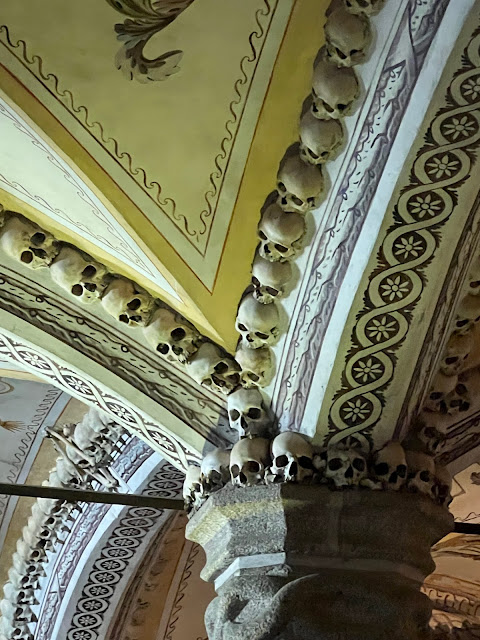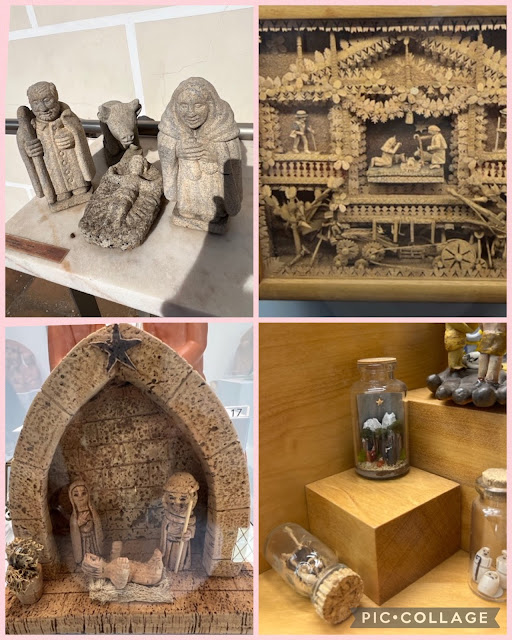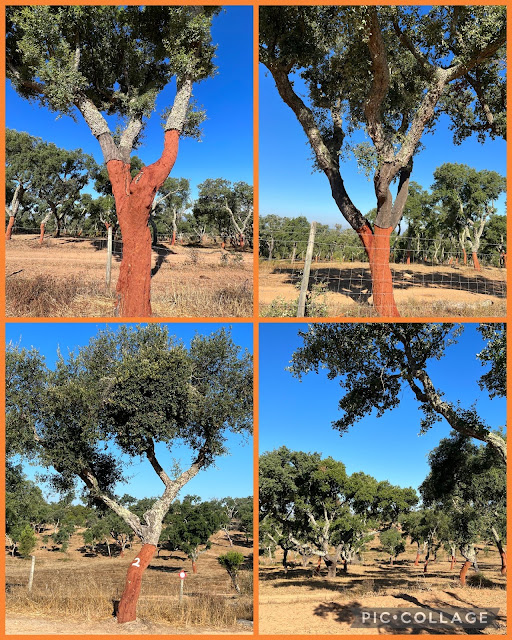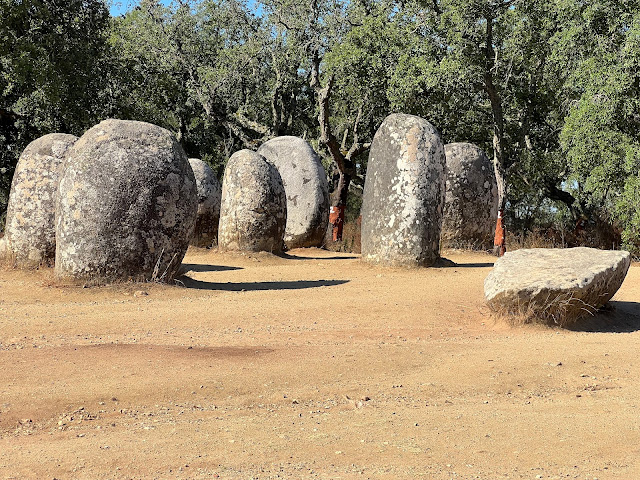Évora is the capital of the Alentejo region and is only a 90-minute train ride away from Lisbon.
Ready - Set - Go!
The adventure begins...
Évora was founded by the Romans in the 12th century. Because of this, there are many ancient buildings to see within the old city walls.
It also remained undamaged by the great earthquake of 1755.
We found that it was best to just put away the map and simply wander. After all, nothing is better than getting lost inside the walls of an ancient city!
What we immediately noticed in our wandering was the stunning architecture of the low whitewash houses, decorated with painted tiles, mustard-yellow trim, wrought-iron balconies and red tile rooftops.

The Sé de Évora is the largest medieval cathedral in the country. It began to be built in 1186, but was fully completed only 64 years later, in 1250. Over the centuries, improvements and more additions were made, expanding its space.
This gothic cathedral looks more like a castle, with its turrets and towers.
One of the best surprises was the spiral staircase that led up to the cathedral roof terrace. We climbed the stairs for beautiful views over Evora!
One of the most famous ruins in Évora is the Roman temple ruins, also knows as Diana’s Temple. The 14 columns that remain are standing at the highest point in the city.
We are always up for a visit to a museum.
The Museu de Évora (Évora Museum) permanently displays a collection of archaeology, art and the assets from the convents of Evora.
The Church of St Francis is famous for the Capela dos Ossos (The Chapel of Bones). The ossuary displays the bones of over 5,000 bodies discovered in the graveyards of the city. It was created by Franciscan monks who wanted to show people that we all meet the same fate, regardless of status. In fact, the inscription carved above the entrance reads ‘we bones that are here, await yours’.
Something to consider, I suppose.
On to more pleasant things, the church also held a collection of over 2,600 nativity scenes from all over the world, which were amazing!
And...another museum.
On the edge of the city is the Silver Aqueduct, original from the Romans that still supplies the town today, as well as walls from distant times when the city was completely surrounded by them.
Venturing outside of the city...
We found hundreds of cork trees.
Portugal and Spain are home to over half of the world’s cork forests.
The process of removing the outer bark is done once every 9 years. A red tree indicates it has had its bark recently removed. The '2' indicates that it was removed in 2022. The hardy cork oak then grows a new layer of bark. The protection of cork trees by law has resulted in thousands of acres of protected forests.
To produce cork, a cork oak (Sobreiro in Portuguese) must be at least 25 years old. A cork oak can live as long as two centuries. Portugal’s cork industry is truly sustainable.
(This cow is enjoying his cork tree shade.)
And, who knew, but Portugal even has its very own Stonehenge!
Sometimes it is referred to as "Stonehenge Portugal" or "Portuguese Stonehenge", these stone formations were strategically placed here from 4000-5000 BC making them about 2,000 years older than Stonehenge!
Since there are no fences, you are free to roam freely among the nearly 100 monoliths.
The true purpose of these stone circles is unknown. However, around 3000 BC many of the stones were moved. It is believed this was to better align with the stars, moon, and sun.
We've saved the best for last!
After all that sight-seeing, we were able to spend the afternoon with
two very special couples -
Elder and Sister Benedict (Jay and Brenda)
and
Rusty and Robin Schafer.
They picked us up at our hotel and then took us on a tour of the almond orchards outside of Évora.
When we reached the top of a very scenic hill, we enjoyed a delicious picnic and visit. We loved hearing all about their adventures in 'this neck of the woods'.
Don, Elder Benedict, Rusty, and Larry
Kay, Sister Benedict, Linda, and Robin
Rusty is responsible for 7,000 acres of almond trees. They moved here from Bakersfield, California two years ago at the request of several almond tree farm investors in Portugal. Rusty is responsible for installing the irrigation system, planting the trees, caring for the trees, harvesting the fruit, - and whatever else. He is also sharing his techniques with other almond growers in the area to help improve their harvest successes.Their plans are to be here for another three years.
Bet you didn't know that...
Almonds are one of nature’s superfoods. They are heart-healthy, protein-packed, and shelf-stable, making them a perfect whole-food snack.
The ideal growing region for almonds is an area that gets dry, hot summers with plenty of sunshine.
Évora certainly fits that category!
Orchards generally produce for 25 years, yielding their first crop three years after planting.
Almond farmers use mechanical tree shakers to get the almonds to fall to the ground. They are then left to further dry in the summer sun for as many as eight to ten days. Eventually, they are swept into rows and picked up for processing.
The average healthy and mature almond tree can produce 50-65 lbs. of nuts.
There are over 30 different varieties of almonds.


























































